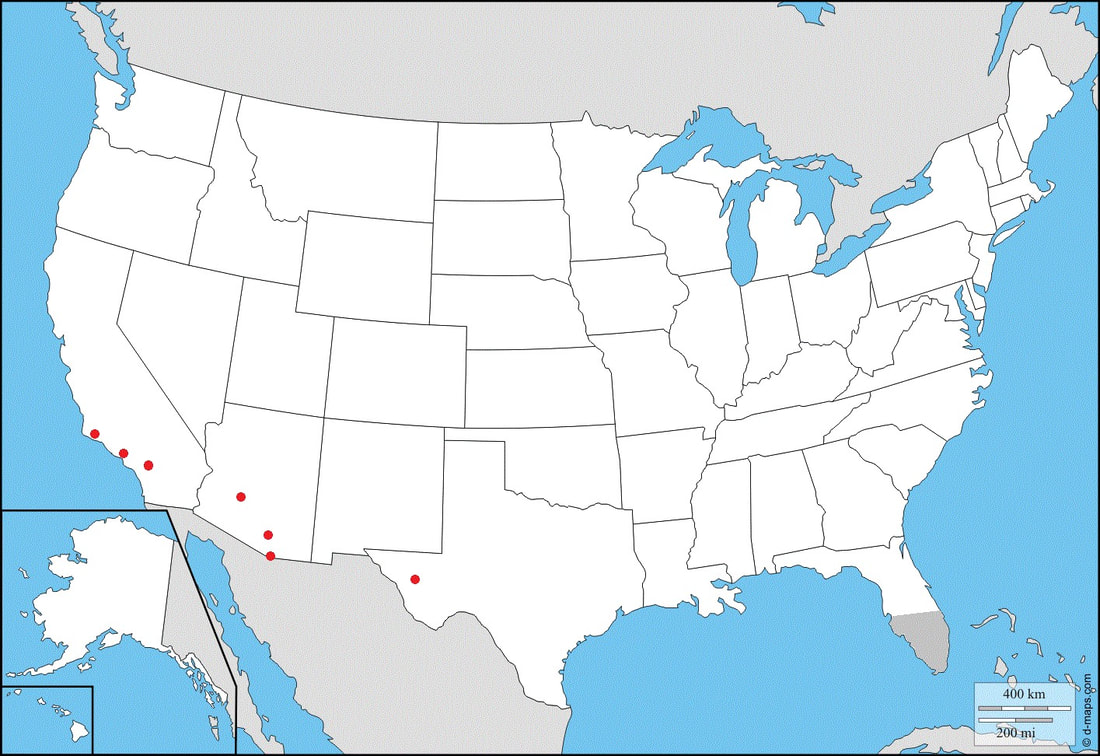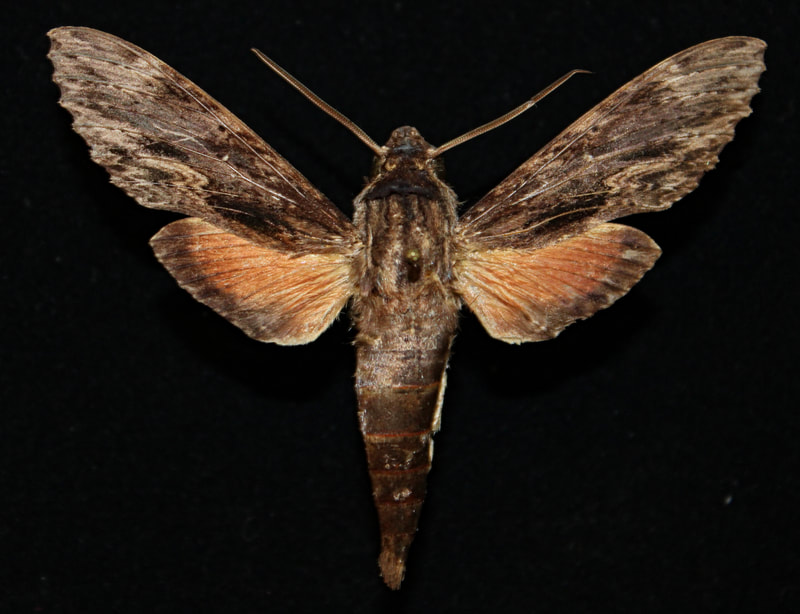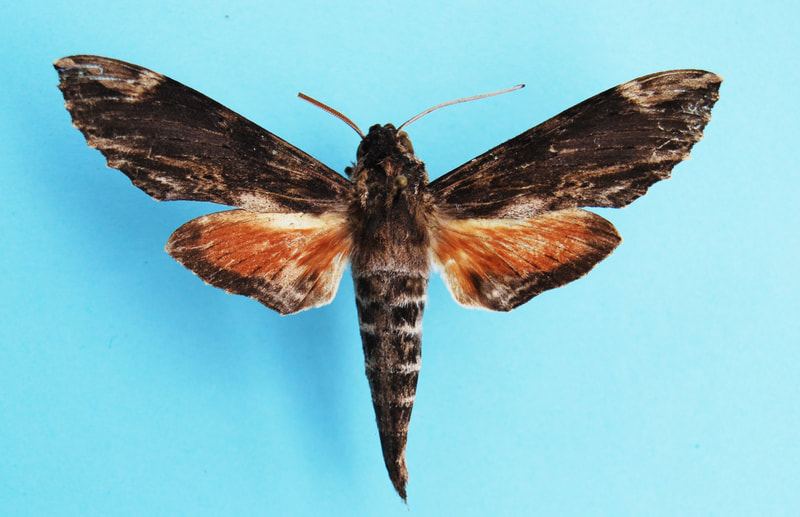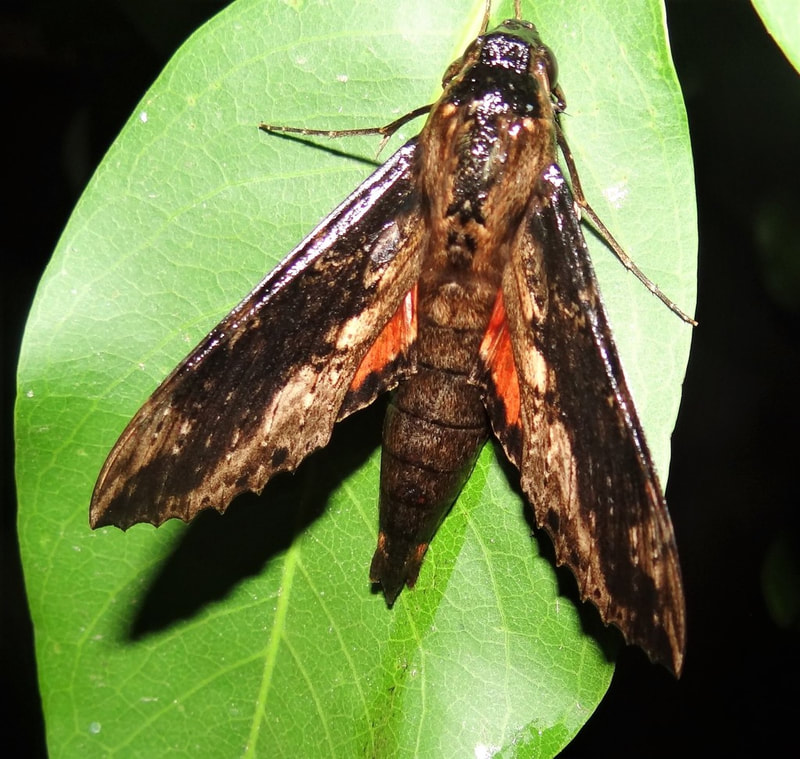|
Common Name: Cramer’s Sphinx
Ecology and Life History: This moth is active year-round in Central and South America, but tending to be reported only from July-December in the USA. It has been reocrded in California, Arizona, Texas, and Florida in the USA. It has been recorded breeding in CA, and likely breeds in Arizona (2).This species is attracted to light, and both sexes will come to artificial lights. Bait is an ineffective method of surveying this species. This moth is not sexually dimorphic, though females are usually larger than males. Females also possess a larger, rounder abdomen. Eggs are likely laid on the leaves or stems of hostplant. Larvae feed singly at all instars (2). Larvae tend to hide along the mid-vein of the leaf when resting (2). This species has two larval color-forms, a green form, and a gray-blue form (2). Habitat and Searching for Larvae: This species feeds on plants in the Apocynaceae. It has been recorded on Periwinkle (Vinca rosea) in the USA and will accept this plant in captivity (2). This species can be found virtually anywhere on the plant, but may show a preference for new growth in the younger instars. This is an odd species, being found primarily in the mountains of Southeastern Arizona where it is dry and mountainous (2). It was also once established in California, where it fed on Periwinkle on the campus of University of California Riverside (2). Both of these habitats contrast greatly from the tropical forests it usually inhabits. Larvae can likely be found throughout the fall and spring months if it does indeed breed in the USA. Like other members of the genus, it is suspected that this species fluoresces under UV light, though no field tests have shown this yet. Rearing Notes: {COMING SOON} Host plants: Click here to load this Caspio Cloud Database
Cloud Database by Caspio |
Adult Description: This is a medium sized brown moth with forewings 32-42mm (2). The apex and basal area of the wing is a lighter brown color. This species can be confused with Erinnyis alope and Erinnyis lassauxii, however examining the hindwings easily separates them. In this species, the hindwing is red with a scalloped black rim. In E. alope, the hindwing is yellow and in E. lassauxii the hindwing lacks the scalloping in the black rim.
Larval Description: L5: An unusual looking larva, it is green to blue-gray and rather thin. It lacks a caudal horn, like some others in the genus. The body is covered in black speckling and there is a red and blue eyespot on the thoracic segments. This eyespot is usually hidden until the larva exposes it in an effort to startle a predator. |
The gallery to the left contains photos of Erinnyis crameri adults. If you have a photo that you would like to submit to us, please contact us.
The gallery to the right contains photos of Erinnyis crameri larval and pupal stages. If you have a photo that you would like to submit to us, please contact us.
The gallery to the right contains photos of Erinnyis crameri larval and pupal stages. If you have a photo that you would like to submit to us, please contact us.







